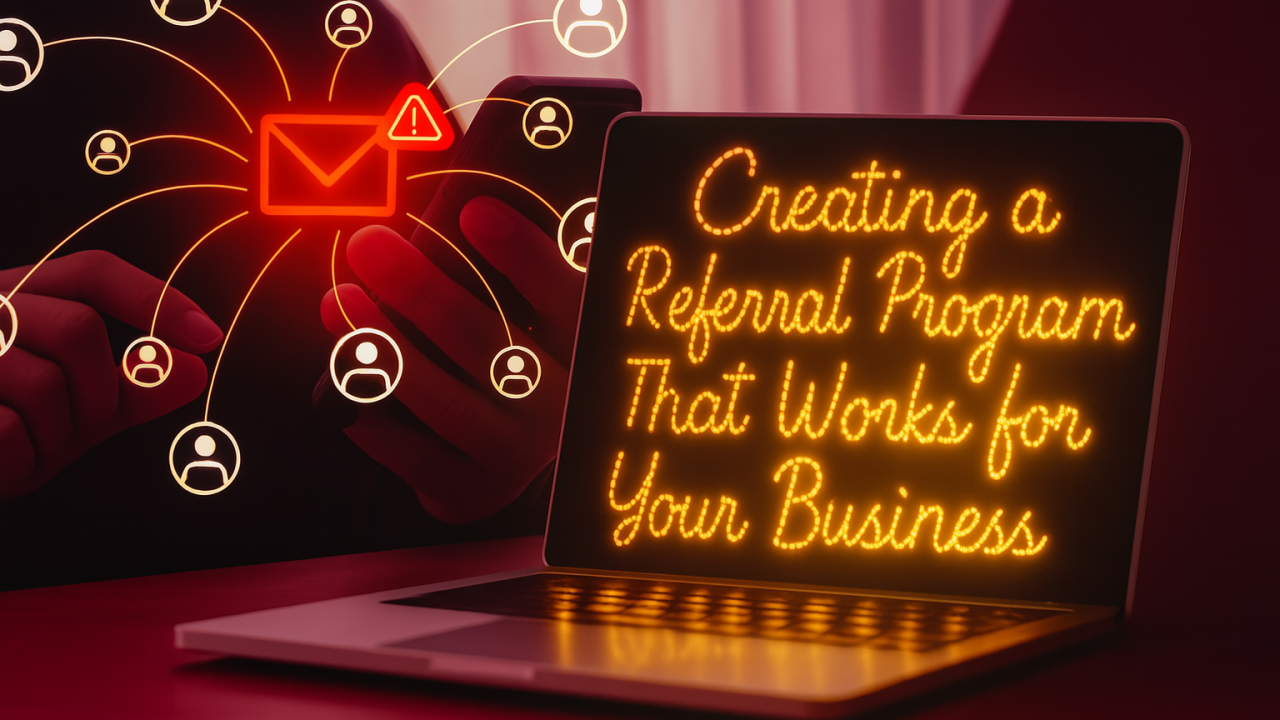
Word-of-mouth marketing has long been one of the most powerful ways to grow a business. People trust recommendations from friends and peers far more than traditional ads. In the digital age, this has evolved into referral programs—a scalable, trackable, and incentivized way to harness the power of personal recommendations.
But not all referral programs succeed. The most effective ones are thoughtfully designed, seamlessly implemented, and continuously optimized. In this comprehensive guide, we’ll walk you through everything you need to know to create a referral program that drives real, sustainable growth for your business.
Launch Your App Today
Ready to launch? Skip the tech stress. Describe, Build, Launch in three simple steps.
BuildWhat Is a Referral Program?
A referral program is a marketing strategy that encourages existing customers to refer new customers to your business, typically by offering rewards or incentives.
Common Formats:
- Single-sided: Only the referrer gets rewarded
- Double-sided: Both the referrer and the referred person get a reward
- Tiered: Bigger rewards for more referrals or milestones
Common Rewards:
- Cash or store credit
- Discounts or free products
- Exclusive access or memberships
- Donations to charities on their behalf
Why Referral Programs Work
Referral programs tap into social proof and trust—two of the most influential psychological drivers in consumer behavior.
Key Benefits:
- Low acquisition cost: Far cheaper than ads
- High conversion rate: Referred leads often convert 4x faster
- Stronger loyalty: Referrers are more engaged customers
- Scalable growth: A well-designed program can snowball over time
Statistics That Matter:
- 92% of consumers trust referrals from people they know (Nielsen)
- Referred customers are 18% more loyal and spend 13% more (Wharton)
Step-by-Step: How to Create a Referral Program That Delivers
Step 1: Define Your Goals
Start by deciding what you want to achieve:
- Increase customer base
- Improve retention
- Boost brand awareness
- Increase order value
Make your goals specific and measurable (e.g., “Add 1,000 new customers in Q3 via referrals”).
Step 2: Know Your Audience
Understand your customer base:
- Who are your happiest and most loyal users?
- What motivates them? Discounts? Recognition? Cash?
- How likely are they to refer others?
Surveys, NPS scores, and interviews can help identify referral-friendly segments.
Step 3: Choose the Right Reward Structure
| Reward Type | Pros | Best For |
| Cash | Simple, universally valued | B2C, SaaS, fintech |
| Discount/Credit | Drives repeat business | E-commerce, marketplaces |
| Free Product | Strong value perception | Subscription boxes, DTC brands |
| Exclusive Access | Builds community and FOMO | Memberships, communities |
| Charitable Giving | Great for purpose-driven brands | Nonprofits, ethical consumer goods |
Double-sided rewards usually work best—they give new users a reason to convert and referrers a reason to share.
Step 4: Make It Easy to Refer
Reduce friction in the referral process:
- One-click sharing via email, social, or chat
- Personalized referral links
- Clear explanation of how rewards work
- Mobile-friendly interface
Tip:
Use referral software like:
- ReferralCandy
- Friendbuy
- Yotpo
- Postscript (for SMS referrals)
- Imagine.Bo (automated workflows for referrals)
Step 5: Promote Your Program
Referral programs don’t work if people don’t know about them.
Promote via:
- Email campaigns
- In-app banners or modals
- Order confirmation pages
- Post-purchase thank you pages
- Social media posts
- Customer support signatures
Pro Tip: Include referral invites in onboarding flows or milestone achievements.
Step 6: Track and Optimize
Use analytics to track:
- Participation rate
- Referral conversion rate
- Cost per referral
- Most active referrers
- Reward redemption rate
Tools like Google Analytics, Mixpanel, or your referral platform can help.
Optimize based on data:
- A/B test reward types or copy
- Identify drop-off points
- Reward top referrers with shoutouts or bonuses
Common Mistakes to Avoid
| Mistake | Why It’s Harmful |
| Overcomplicating the process | Confuses users and reduces participation |
| Offering weak rewards | Doesn’t motivate action |
| Not explaining the terms clearly | Causes support issues and distrust |
| Ignoring mobile optimization | Misses a huge chunk of referral traffic |
| Not following up on rewards | Damages credibility and discourages future referrals |
Referral Program Examples That Work
1. Dropbox
- Offered 500MB extra storage to both referrer and invitee
- Result: 60% of signups came from referrals
2. Tesla
- Offered free Supercharging miles and exclusive event invites
- Tapped into brand loyalty and community
3. Uber
- Gave both parties ride credits
- Made referral sharing a key part of the app interface
4. Airbnb
- Offered $25–$75 in travel credit
- Incentivized both guests and hosts to spread the word
How Imagine.Bo Can Power Your Referral Program
Imagine.Bo is an AI-powered no-code platform that helps businesses create automated workflows. You can easily set up a referral system without developers.
Just describe what you want:
“Set up a double-sided referral program where users earn ₹500 credit after a referred friend makes a purchase.”
Imagine.Bo will:
- Create unique referral links for users
- Trigger rewards based on successful conversions
- Send automatic emails, SMS, or push notifications
- Track referrals in real time via dashboards
Perfect for:
- D2C brands
- SaaS apps
- Membership communities
- Service providers
Referral Program Best Practices
- Start small, iterate fast: Begin with a simple offer, then improve over time
- Highlight social proof: Show testimonials and user counts
- Create urgency: Use limited-time bonuses to spike activity
- Recognize top referrers: Offer leaderboard shoutouts or exclusive gifts
- Keep communication clear: Always explain how to earn and redeem rewards
FAQs: Referral Programs
Q1: How long should my referral program run?
Ideally, it’s ongoing—but short-term referral bursts can drive quick growth when tied to campaigns.
Q2: Can I offer multiple reward tiers?
Yes! Tiered programs (e.g., refer 3 friends, get bonus gift) work well for power users.
Q3: What’s better—cash or credit rewards?
It depends. Cash has universal appeal; store credit encourages repeat business.
Q4: Should I verify referrals manually?
No. Use automation to track referrals and reward triggers in real time.
Q5: How do I prevent fraud?
Limit to verified purchases, use unique links, and monitor suspicious patterns.
Final Thoughts
Referral programs aren’t just about giving away rewards—they’re about building trust, loyalty, and long-term relationships with customers. When executed thoughtfully, they become one of the most effective growth levers in your marketing strategy.
By making it easy to refer, offering compelling rewards, and tracking results smartly, your business can turn happy customers into your most valuable promoters.
And with platforms like Imagine.Bo, you can do it all without writing code.
Start today—and let your customers grow your business for you.
Launch Your App Today
Ready to launch? Skip the tech stress. Describe, Build, Launch in three simple steps.
Build




